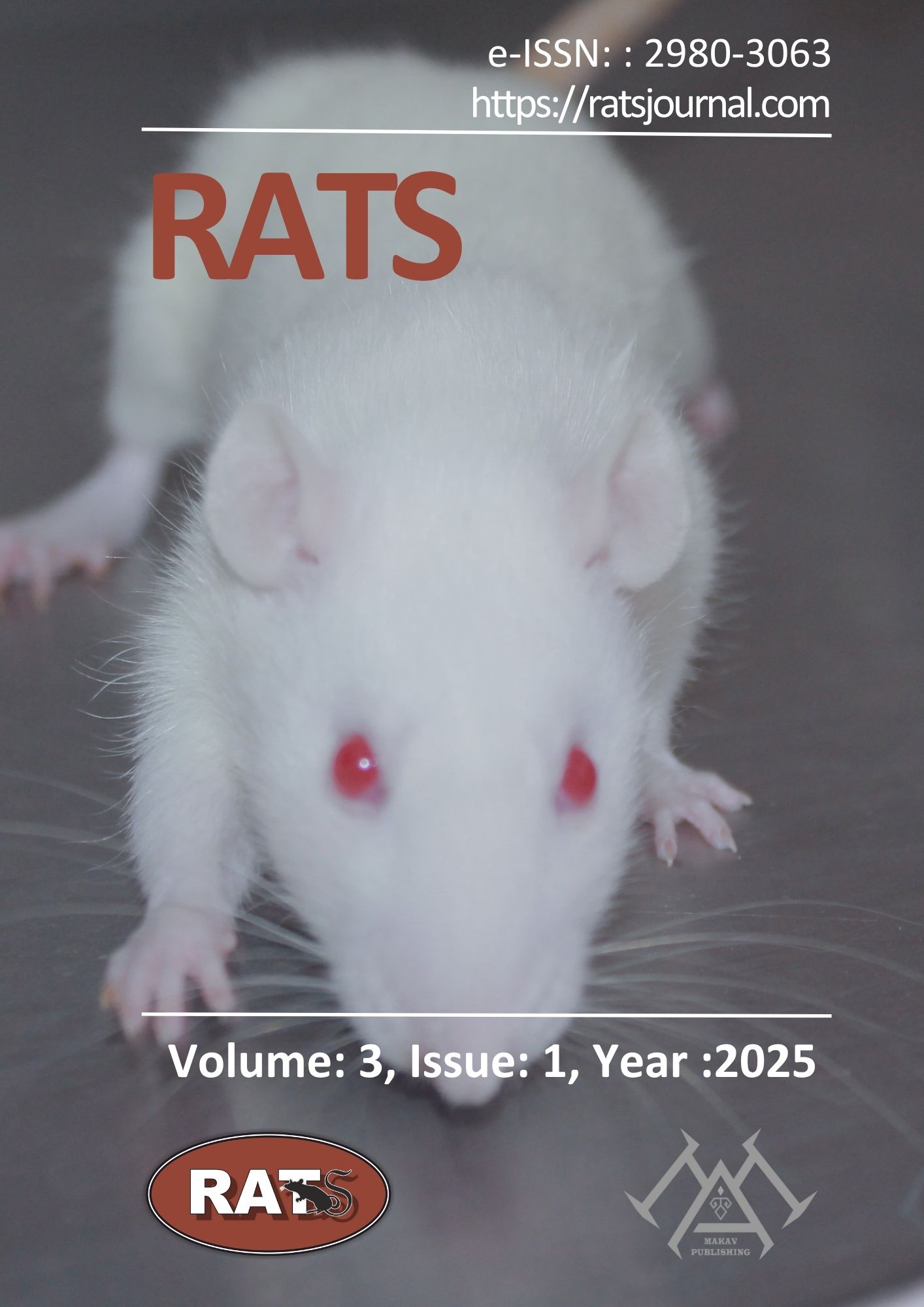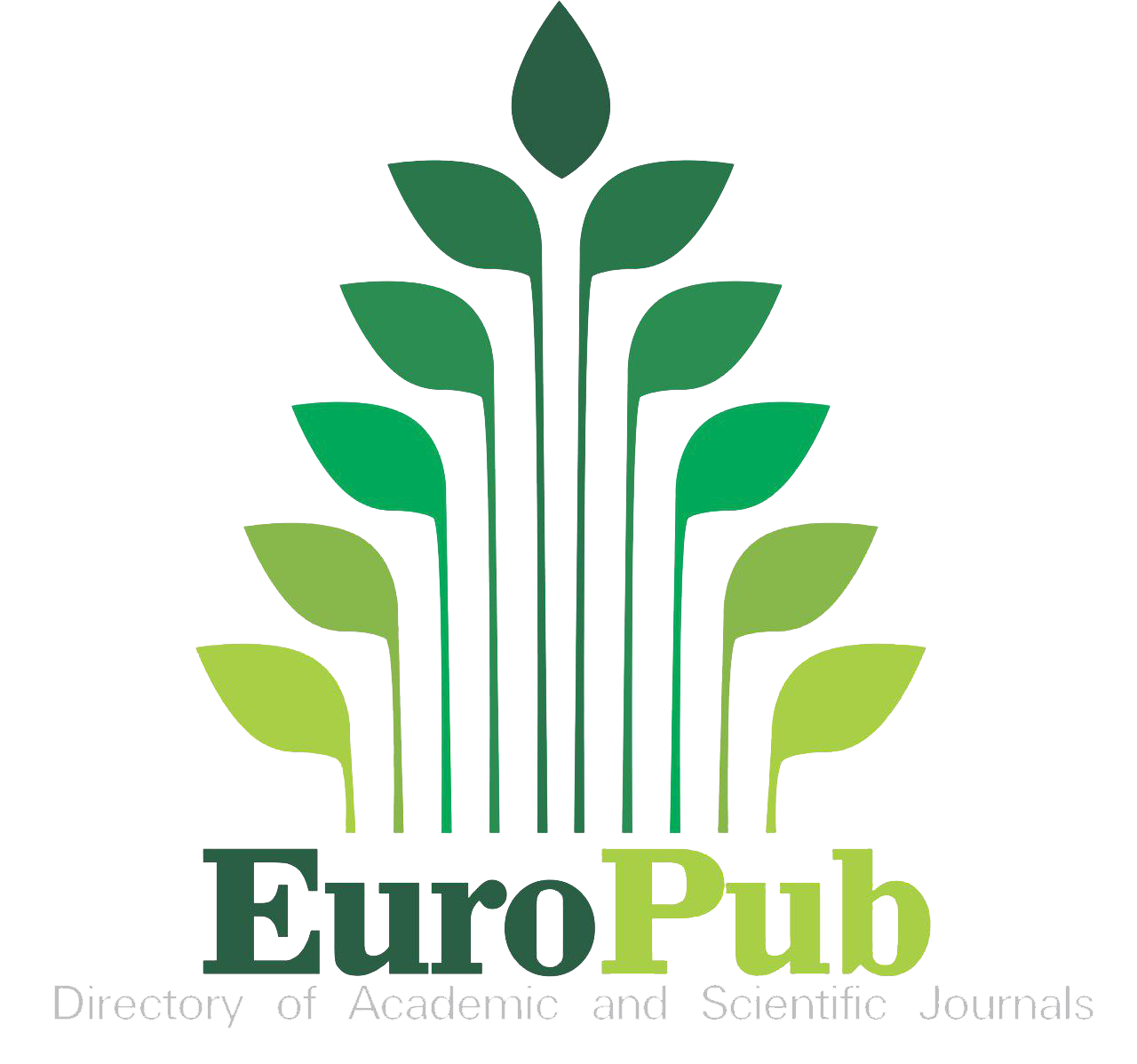Neglected parasite of rats and mice: Cryptosporidium
DOI:
https://doi.org/10.5281/zenodo.15767533Keywords:
Cryptosporidium sp., mice, parasites, ratAbstract
Cryptosporidium sp. is an important zoonotic intestinal pathogen that can cause gastrointestinal symptoms and trigger the host's immune response. Cryptosporidium species can infect humans and more than 260 animal species, including 54 rodent species. This review provides a comprehensive review of the pathogenesis, clinical symptoms, diagnostic methods, treatment approaches and prevention strategies for disease control of Cryptosporidium species infecting rats and mice. The pathological effects of the known pathogenic species Cryptosporidium muris and Cryptosporidium parvum and their role in rats and mice are discussed. The importance of prevention methods such as hygiene measures and biological safety practices are emphasized to control the disease. Cryptosporidiosis poses a serious threat to both animal health and public health and therefore the development of effective prevention strategies is essential.
References
Zhou S, Hu X, Li H, et al. Molecular identification and subtyping of Cryptosporidium spp. in laboratory mice and rats. Parasite (Paris, France) 2024;31:75. doi: 10.1051/parasite/2024073.
Deng L, Chai Y, Luo R, et al. Occurrence and genetic characteristics of Cryptosporidium spp. and Enterocytozoon bieneusi in pet red squirrels (Sciurus vulgaris) in China. Scientific reports 2020;10(1):1026. doi: 10.1038/s41598-020-57896-w.
Zhao Z, Wang R, Zhao W, et al. Genotyping and subtyping of Giardia and Cryptosporidium isolates from commensal rodents in China. Parasitology 2015;142(6):800-806. doi: 10.1017/s0031182014001929.
Cervero-Aragó S, Desvars-Larrive A, Lindner G, Sommer R, Häfeli I, Walochnik J. Surface Waters and Urban Brown Rats as Potential Sources of Human-Infective Cryptosporidium and Giardia in Vienna, Austria. Microorganisms 2021;9(8). doi: 10.3390/microorganisms9081596.
Suprihati E, Puspitasari H, Indasari EN, et al. Molecular detection of Cryptosporidium spp. among wild rats in Surabaya, East Java, Indonesia. Open veterinary journal 2024;14(10):2687-2692. doi: 10.5455/OVJ.2024.v14.i10.18.
García-Livia K, Martín-Alonso A, Foronda P. Diversity of Cryptosporidium spp. in wild rodents from the Canary Islands, Spain. Parasites & vectors 2020;13(1):445. doi: 10.1186/s13071-020-04330-9.
Wang N, Wang K, Liu Y, et al. Molecular characterization of Cryptosporidium spp., Enterocytozoon bieneusi and Giardia duodenalis in laboratory rodents in China. Parasite (Paris, France) 2022;29:46. doi: 10.1051/parasite/2022046.
Liu X, Zhou X, Zhong Z, et al. Occurrence of novel and rare subtype families of Cryptosporidium in bamboo rats (Rhizomys sinensis) in China. Veterinary parasitology 2015;207(1-2):144-148. doi: 10.1016/j.vetpar.2014.11.009.
Wei Z, Liu Q, Zhao W, et al. Prevalence and diversity of Cryptosporidium spp. in bamboo rats (Rhizomys sinensis) in South Central China. International journal for parasitology Parasites and wildlife 2019;9:312-316. doi: 10.1016/j.ijppaw.2019.06.010.
Mamedova S, Karanis P. Cryptosporidium spp. infections in livestock and wild animals in Azerbaijan territory. Journal of water and health 2021;19(4):545-562. doi: 10.2166/wh.2021.050.
Guérin A, Striepen B. The Biology of the Intestinal Intracellular Parasite Cryptosporidium. Cell host & microbe 2020;28(4):509-515. doi: 10.1016/j.chom.2020.09.007.
Mirzaghavami M, Sadraei J, Pirestani M, Bahadory S. The Role of Some Free-Ranging Animals in the Transmission of Multi-Host Species of Cryptosporidium Spp. Iranian journal of parasitology 2023;18(3):313-323. doi: 10.18502/ijpa.v18i3.13754.
Baker DG. Parasites of Rats and Mice. In: Baker DG, ed. Flynn's Parasites of Laboratory Animals. Blackwell Publishing; 2007: 303-397. doi: 10.1002/9780470344552.ch11.
Fayer R, Xiao L. Cryptosporidium and cryptosporidiosis. CRC Press; 2007. doi: 10.1201/9781420052275.
Liu L, Xu Q, Jiang A, Zeng F, Zhao W, Tan F. Molecular characterization of Cryptosporidium in wild rodents from the Inner Mongolian Autonomous Region and Liaoning Province, China: assessing host specificity and the potential for zoonotic transmission. Frontiers in veterinary science 2024;11:1406564. doi: 10.3389/fvets.2024.1406564.
Kváč M, Kodádková A, Sak B, et al. Activated CD8+ T cells contribute to clearance of gastric Cryptosporidium muris infections. Parasite immunology 2011;33(4):210-216. doi: 10.1111/j.1365-3024.2010.01271.x.
Li F, Zhao W, Zhang C, et al. Cryptosporidium Species and C. parvum Subtypes in Farmed Bamboo Rats. Pathogens (Basel, Switzerland) 2020;9(12). doi: 10.3390/pathogens9121018.
Gündüz N, Arslan M. Determining the Prevalence of Cryptosporidium Infections with Acid Fast Staining and ELISA in Calves at the Kars Province of Turkey. Turkiye parazitolojii dergisi 2017;41(1):5-8. doi: 10.5152/tpd.2017.4833.
Chappell CL, Okhuysen PC, Langer-Curry RC, Akiyoshi DE, Widmer G, Tzipori S. Cryptosporidium meleagridis: infectivity in healthy adult volunteers. The American journal of tropical medicine and hygiene 2011;85(2):238-242. doi: 10.4269/ajtmh.2011.10-0664.
Jalovecká M, Sak B, Kvác M, Kvetonová D, Kucerová Z, Salát J. Activation of protective cell-mediated immune response in gastric mucosa during Cryptosporidium muris infection and re-infection in immunocompetent mice. Parasitology research 2010;106(5):1159-1166. doi: 10.1007/s00436-010-1785-2.
Oliveira BCM, Bresciani KDS, Widmer G. Deprivation of dietary fiber enhances susceptibility of mice to cryptosporidiosis. PLoS neglected tropical diseases 2019;13(9):e0007411. doi: 10.1371/journal.pntd.0007411.
Oliveira BCM, Widmer G. Probiotics enhance susceptibility of mice to cryptosporidiosis. bioRxiv 2018:304956. doi: 10.1101/304956.
Widmer G, Creasey HN. Fecal microbiota impacts development of Cryptosporidium parvum in the mouse. Scientific reports 2024;14(1):5498. doi: 10.1038/s41598-024-56184-1.
Downloads
Published
How to Cite
Issue
Section
License
Copyright (c) 2025 Rats

This work is licensed under a Creative Commons Attribution 4.0 International License.


















